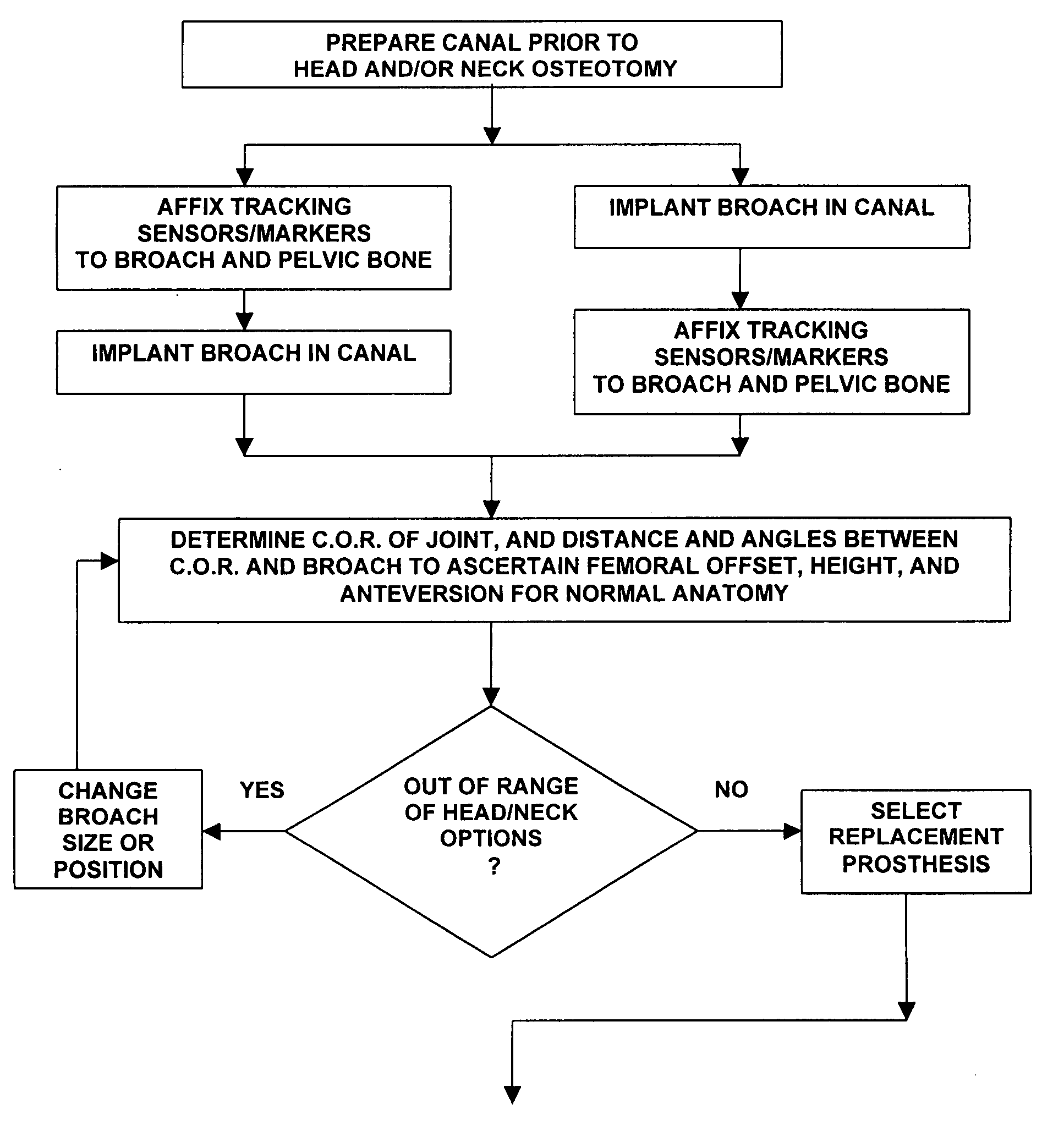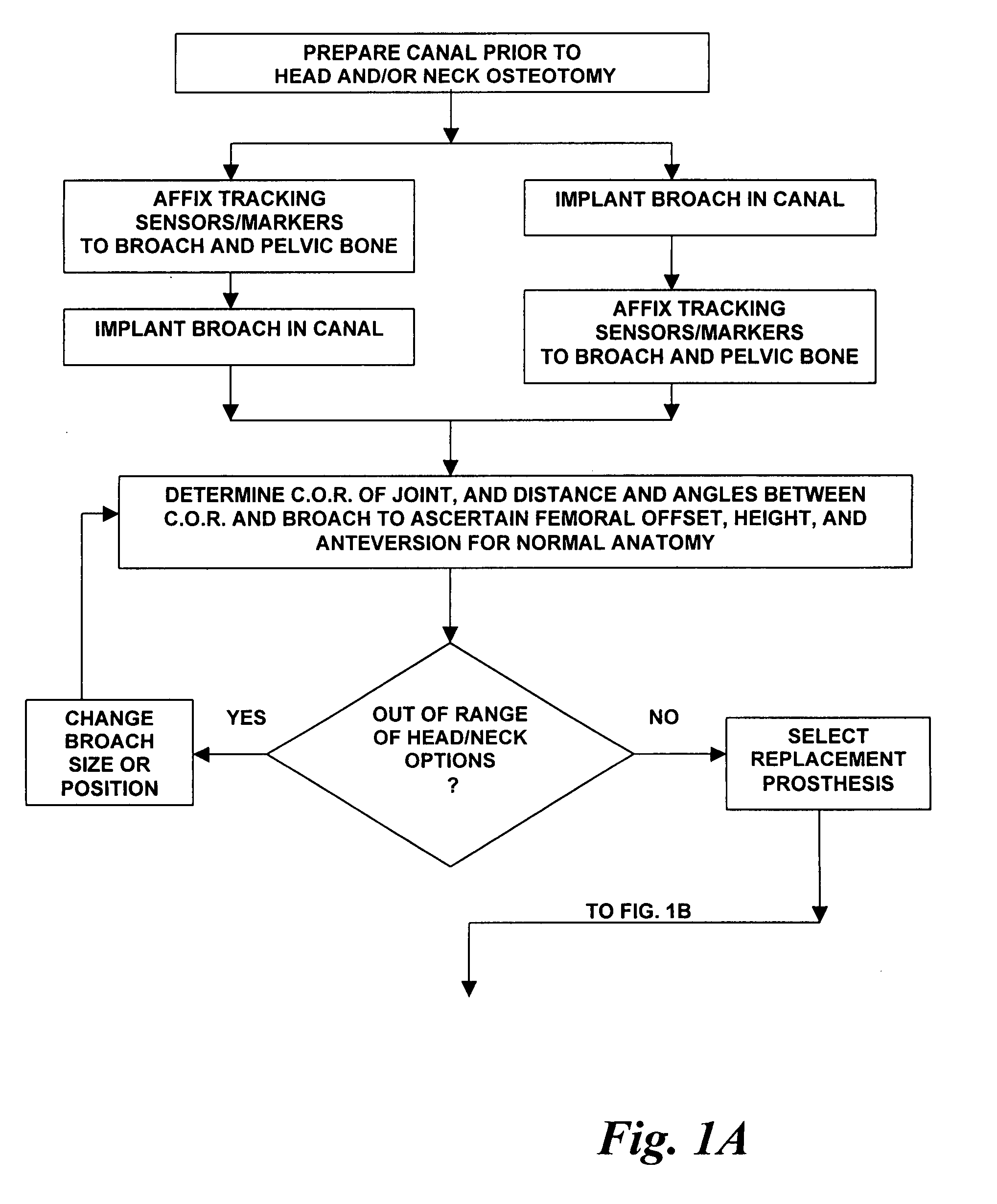Total joint replacement component positioning as predetermined distance from center of rotation of the joint using pinless navigation
a technology of total joint replacement and predetermined distance, applied in the field of total joint arthroplasty of ball and socket joints, can solve the problems of persistent limp, leg length displacement, lateral offset displacement,
- Summary
- Abstract
- Description
- Claims
- Application Information
AI Technical Summary
Benefits of technology
Problems solved by technology
Method used
Image
Examples
Embodiment Construction
[0050]In the following discussion, the term, femoral component, refers to either the femoral broach that is used to prepare the shape of the femoral canal or the final femoral prosthesis. The term, humeral component, refers to either the humeral broach that is used to prepare the shape of the humeral canal or the final humeral prosthesis. A hip joint is described and depicted in some of the drawings, for purposes of example only, but not limited thereto, and it should be understood that present invention relates to a method of performing a total arthroplasty of a ball and socket joint, such as the hip or shoulder.
[0051]It should also be understood that the present pinless surgical navigation method can be used in conjunction with known surgical procedures, such as: determining the center of rotation of the a joint through arcs of motion of the limb, through mapping the surface of the femoral head or humeral head, and can be accomplished through either a superior approach while the p...
PUM
 Login to View More
Login to View More Abstract
Description
Claims
Application Information
 Login to View More
Login to View More - R&D
- Intellectual Property
- Life Sciences
- Materials
- Tech Scout
- Unparalleled Data Quality
- Higher Quality Content
- 60% Fewer Hallucinations
Browse by: Latest US Patents, China's latest patents, Technical Efficacy Thesaurus, Application Domain, Technology Topic, Popular Technical Reports.
© 2025 PatSnap. All rights reserved.Legal|Privacy policy|Modern Slavery Act Transparency Statement|Sitemap|About US| Contact US: help@patsnap.com



